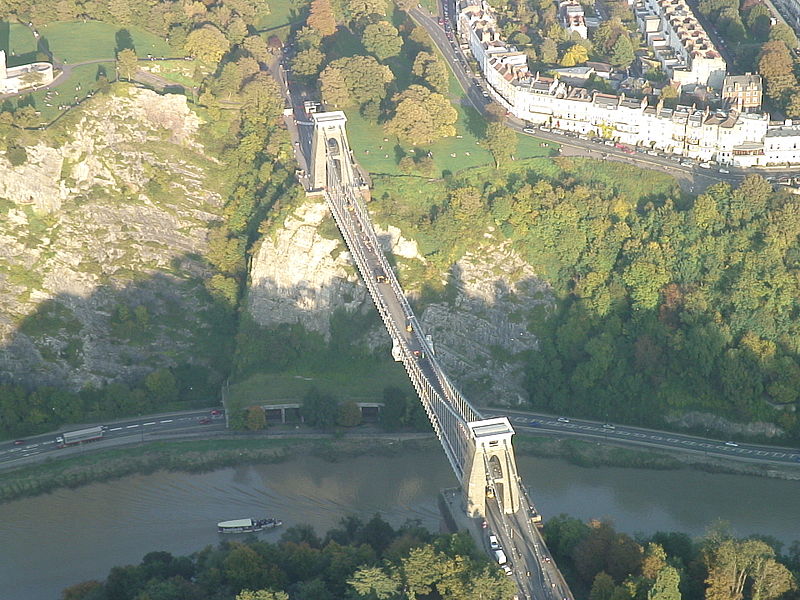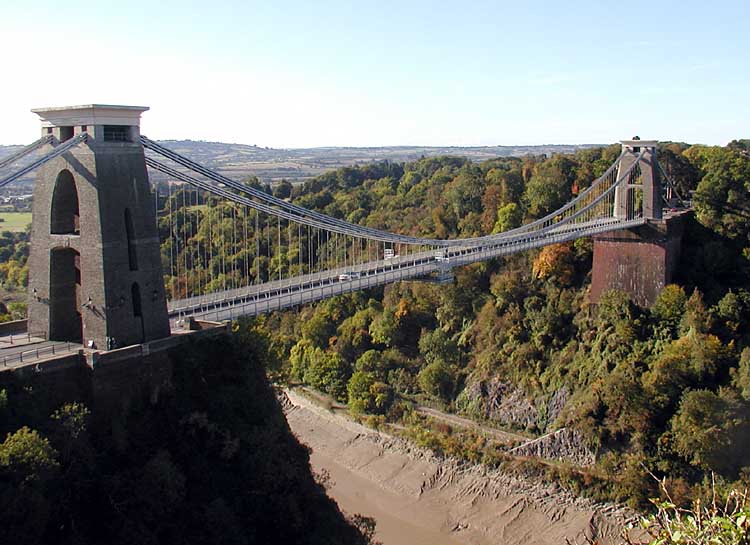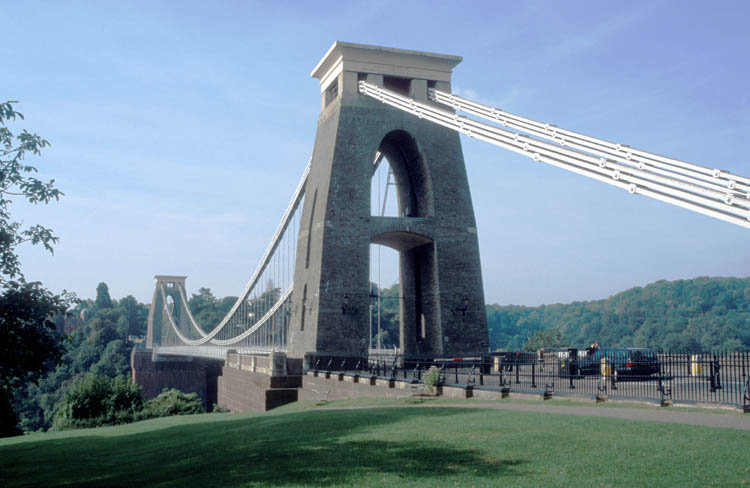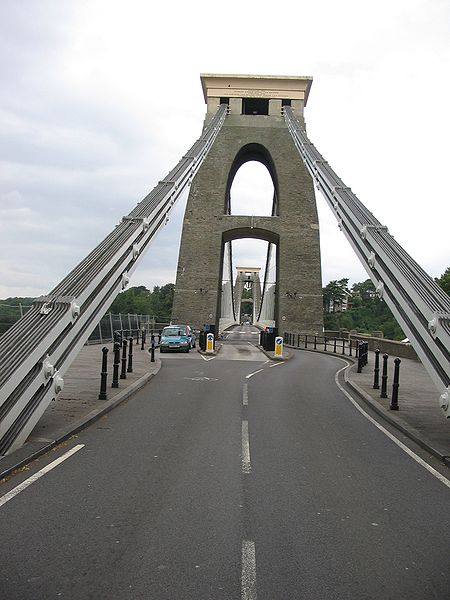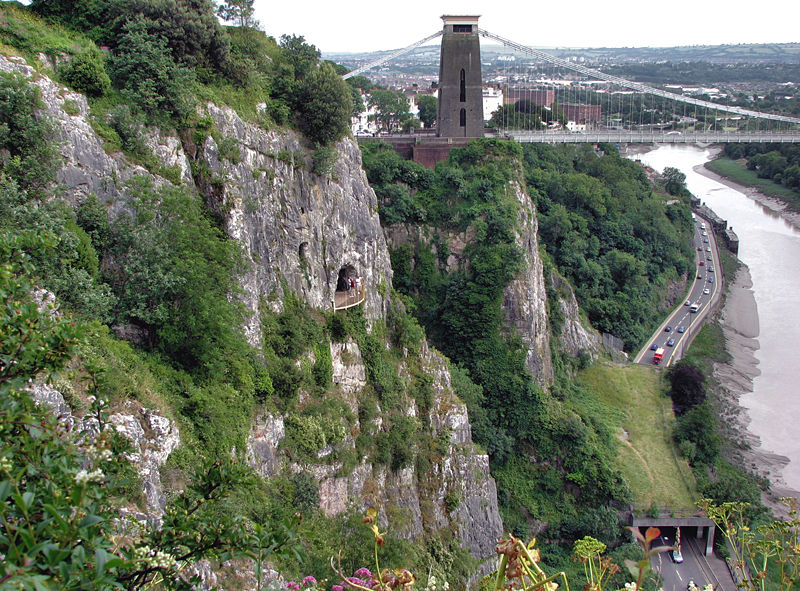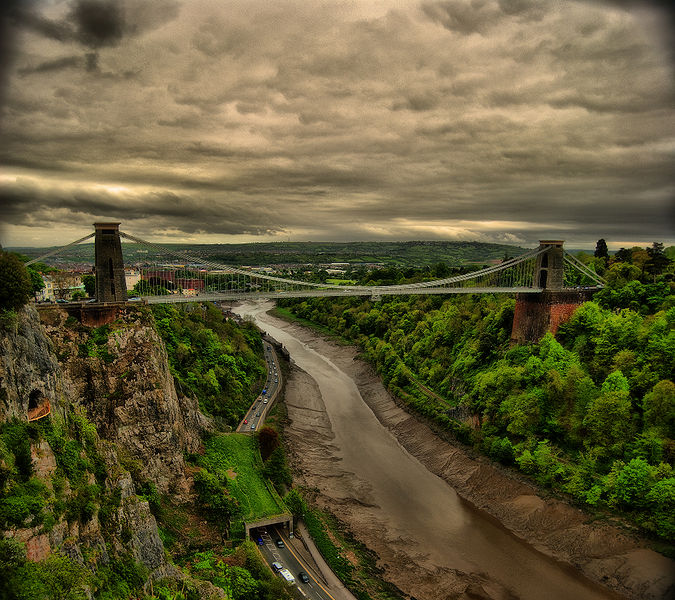| |||||||
Europe
North AmericaSouth AmericaAsiaAustralia and OceaniaAfrica |
Смотрите также: Clifton Suspension Bridge The Clifton Suspension Bridge is a suspension bridge spanning the Avon Gorge, and linking Clifton in Bristol to Leigh Woods in North Somerset, England. Designed by Isambard Kingdom Brunel, it is a landmark that is used as a symbol of Bristol. It is a grade I listed building.
Clifton Suspension Bridge Crosses River Avon Locale Bristol Design Suspension bridge Total length 1,352 ft (414 m) Width 31 ft (9.5m) Longest span 702 ft (214 m) Opening date 1864
History The idea of building a bridge across the Avon Gorge originated in 1753, with a bequest in the will of Bristolian merchant William Vick, who left £1,000 invested with instructions that when the interest had accumulated to £10,000, it should be used for the purpose of building a stone bridge between Clifton Down (which was in Gloucestershire, outside the City of Bristol, until the 1830s) and Leigh Woods (then in Somerset).
By 1829, Vick's bequest had reached £8,000, but it was estimated that a stone bridge would cost over ten times that amount. An Act of Parliament was passed to allow a wrought iron suspension bridge to be built instead, and tolls levied to recoup the cost. A competition was held to find a design for the bridge; the judge, Thomas Telford, rejected all designs, and tried to insist on a design of his own, a suspension bridge supported on tall Gothic towers. Telford claimed that no suspension bridge could exceed the 600 feet (183 m) span of his own Menai Suspension Bridge. A second competition, held with new judges, was won by Brunel's design on 16 March 1831, for a suspension bridge with fashionably Egyptian-influenced towers.
An attempt to build Brunel's design in 1831 was stopped by the Bristol Riots, which severely dented commercial confidence in Bristol. Work was not started again until 1836, and thereafter the capital from Vick's bequest and subsequent investment proved woefully inadequate. By 1843, the towers had been built in unfinished stone, but funds were exhausted. In 1851, the ironwork was sold and used to build the Brunel-designed Royal Albert Bridge on the railway between Plymouthand Saltash.
Brunel died in 1859, without seeing the completion of the bridge. Brunel's colleagues in the Institution of Civil Engineers felt that completion of the Bridge would be a fitting memorial, and started to raise new funds. In 1860, Brunel's Hungerford suspension bridge, over the Thames in London, was demolished to make way for a new railway bridge to Charing Cross railway station, and its chains were purchased for use at Clifton. A slightly revised design was made by William Henry Barlow and Sir John Hawkshaw; it has a wider, higher and sturdier deck than Brunel intended, triple chains instead of double, and the towers were left as rough stone rather than being finished in Egyptian style. Work on the bridge was restarted in 1862, and was complete by 1864. The bridge is now managed by a trust set up by Act of Parliament in 1952. Tolls are levied on vehicles but no longer on cyclists or pedestrians.
In 2003 the weight of crowds travelling to and from the Ashton Court festival and Bristol International Balloon Fiesta put such great strain on the bridge that it was decided to close the bridge to all traffic, including pedestrians, during the whole of the Ashton Court Festival and part of the Balloon Fiesta in 2004. This has continued since then.
Comments: 0 |
|
|||||







































